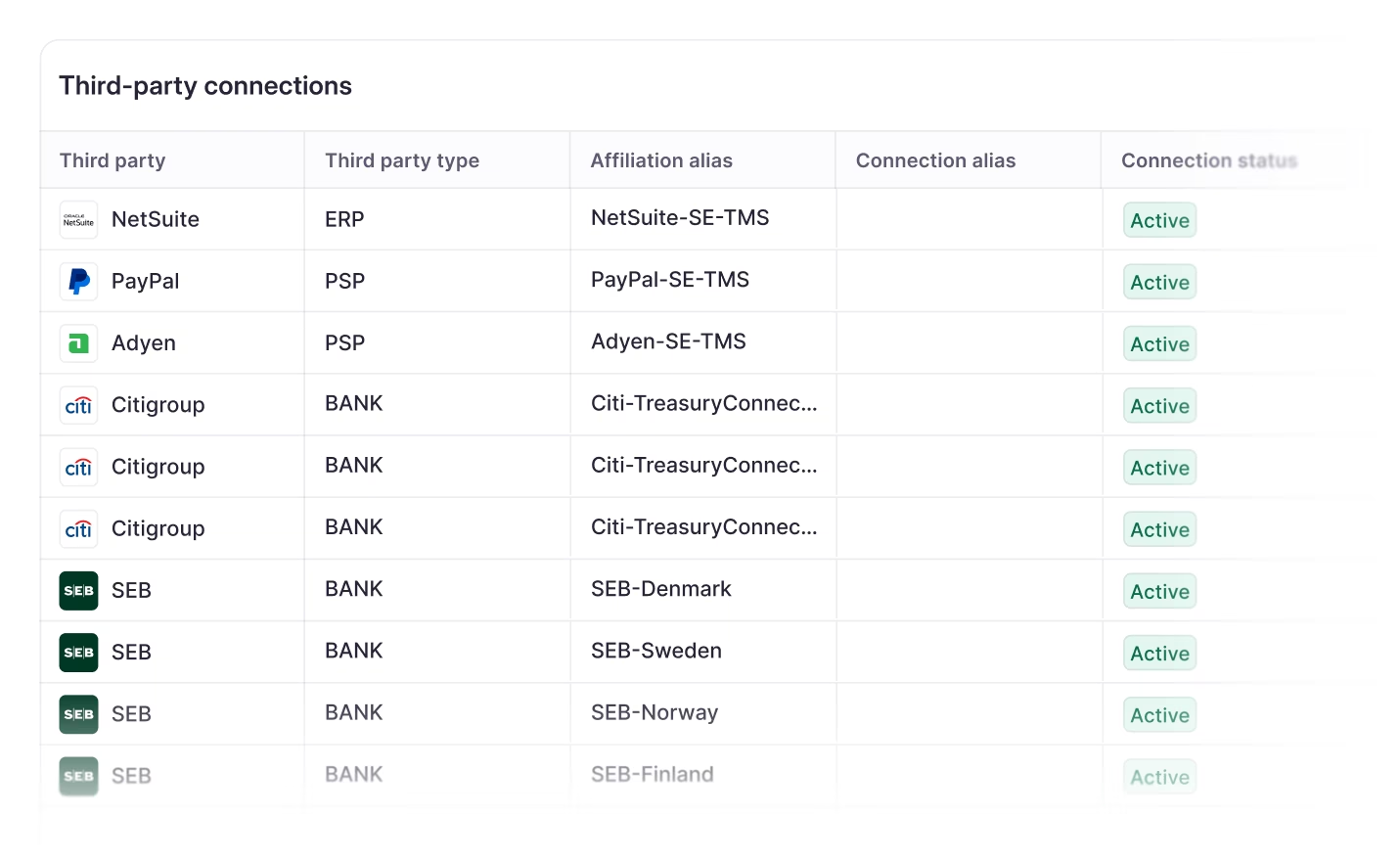Electronic Banking Internet Communication Standard (EBICS)
EBICS is a standard protocol that lets companies connect directly to a specific bank and is widely supported in Germany, France, Austria, and Switzerland.

Introduction to EBICS
EBICS is a standard protocol that lets companies connect directly to a specific bank, as with a host-to-host connection. EBICS is one the most reliable and efficient connectivity options because it is highly standardized, ensuring compatibility between different banks and companies, and digital signatures and encryption are used to secure the data.
EBICS also supports a wide range of banking transactions including payments, collections, and reporting. It requires technical expertise to set up initially, but once in place it can help simplify connections to other banking partners that also support EBICS. The main drawback is its availability: EBICS is not yet widely supported outside Germany, France, Austria, and Switzerland.
For more detail on EBICS and other connectivity methods, read our full guide to bank connectivity.
How EBICS works
EBICS is a standardized protocol for electronic banking that enables secure communication between a company and its banks. It uses standardized XML formats with common message types as well as MT (SWIFT) messages.
Here’s a typical process to set up an EBICS connection:
- Registration: The company registers with its bank(s) to use EBICS. This process involves exchanging public keys and setting up user accounts.
- Authentication: Users are authenticated using secure methods such as a password, PIN, or cryptographic token and provided with unique credentials.
- Secure communication: Data shared between the company and the bank is encrypted and each message is signed digitally to verify that it comes from a trusted source.
- Data processing: Transactions are initiated from the company's ERP or TMS, formatted according to EBICS standards, and sent to the bank via the EBICS client. Once validated, the bank processes the transactions, such as executing payments or updating account balances.
- Automation: As with H2H, EBICS supports automated processes for initiating transactions and retrieving data, reducing manual work.
Pros and cons of EBICS
In theory, EBICS allows companies to set up direct connections with multiple banks in different countries using a single protocol, unlike H2H connections which require a unique connection to each specific bank.
In reality, EBICS coverage is mostly limited to banks in Germany, France, Austria, and Switzerland – which limits its appeal to international companies. The ambition is for EBICS to become standard across the SEPA zone eventually. For now, there is still some variance even amongst banks that already support EBICS: some banks use local variants, and not all follow the latest standard, EBICS 3.0.
Thanks to its standardized formats and message types, though, companies should seriously consider EBICS when available. It is one of the most robust and efficient connectivity methods and can help simplify the implementation process. It requires some work to set up initially, but thereafter it is easier to connect to other EBICS-supporting banks.
- Pros: A reliable, secure connectivity method that can potentially allow companies to connect to multiple banks using a single protocol.
- Cons: EBICS is predominantly supported in Germany, France, Austria, and Switzerland – limiting its usefulness for international companies – and requires engineering resources and coordination with the bank during setup.
How Atlar can help with EBICS connectivity
EBICS is one of many connectivity methods supported by Atlar and, unlike other treasury software providers, Atlar manages the entire implementation end-to-end with no work needed from our customers. To learn more about our approach to bank connectivity, get in touch with our team.
You can unsubscribe anytime.
Further reading
See Atlar in action.
Enter your work email to watch a live product demo.


